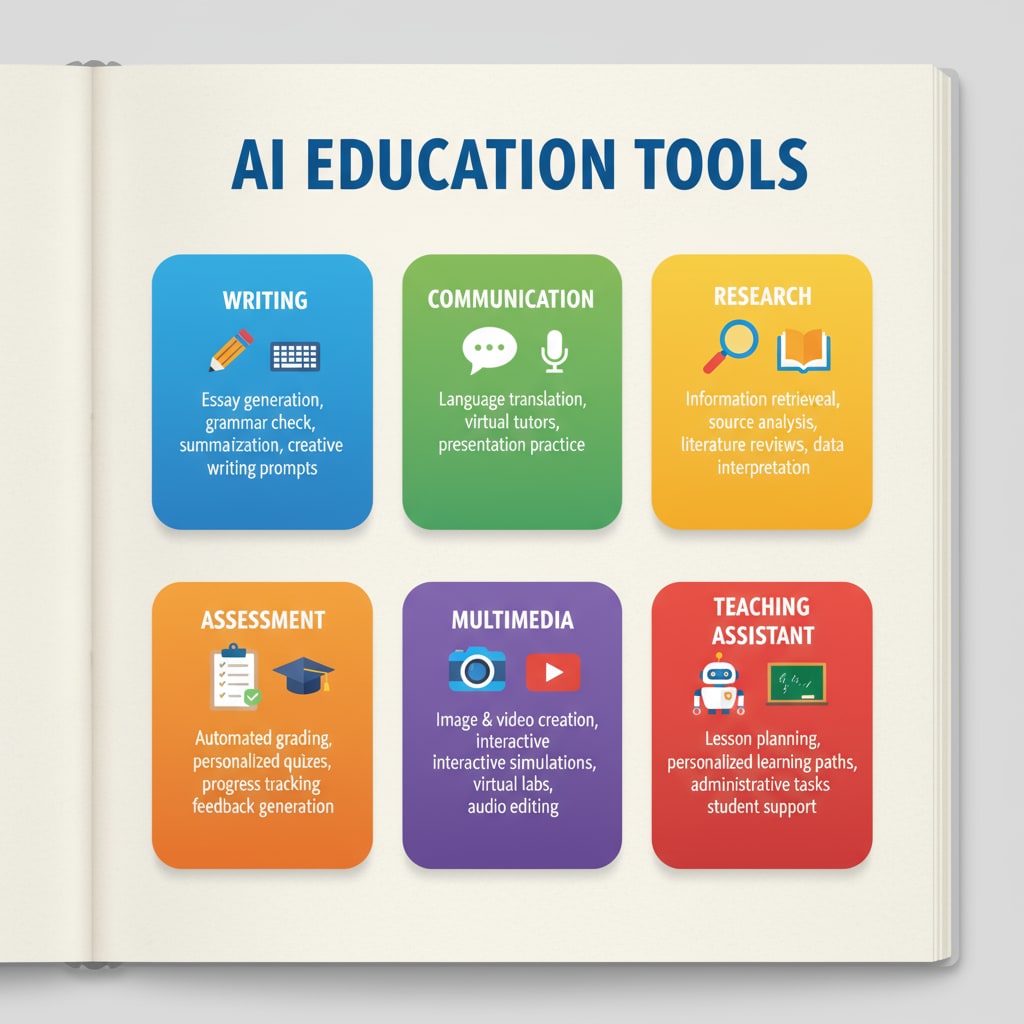AI education tools, learning aids, and teaching applications have revolutionized the K12 educational landscape. In this article, we will take a comprehensive look at six major categories of AI education tools and how they are reshaping the learning experience for students in the K12 system.

Writing and Creation Tools
AI-powered writing and creation tools are a boon for K12 students. These tools can help students improve their writing skills in various ways. For example, they can check grammar and spelling mistakes in real-time. Tools like Grammarly not only correct basic errors but also offer suggestions for better sentence structure and word choice. In addition, some AI writing tools can generate topic ideas and outlines, which is extremely helpful for students when they are starting a new writing project. According to Wikipedia’s page on Artificial intelligence in education, these tools are becoming increasingly popular in classrooms as they enhance students’ creativity and writing proficiency.

Communication and Language Barrier Tools
Another crucial category of AI education tools is those that break down communication barriers. In a diverse K12 classroom, students may have different language backgrounds. AI translation tools, such as Google Translate, can instantly translate text and speech. This allows students to communicate effectively with their peers and teachers, regardless of the language they speak. Moreover, language learning apps that use AI algorithms can help students improve their language skills. Duolingo, for instance, uses AI to personalize the learning experience, adapting to the student’s progress and providing targeted exercises. As stated on Britannica’s page on Artificial intelligence, these communication tools are essential for creating an inclusive learning environment.
Research and Deep Learning Tools
AI tools for research and deep learning are valuable assets in K12 education. These tools can sift through vast amounts of information on the internet to find relevant sources for students’ research projects. Tools like EBSCOhost use AI to index and categorize academic materials, making it easier for students to access reliable information. Additionally, AI-driven educational platforms offer interactive learning experiences that promote deep understanding. For example, some platforms use gamification techniques to engage students in learning complex concepts, which helps students retain information better.

Interactive Assessment Tools
Interactive assessment tools are changing the way teachers evaluate students in K12 education. AI can analyze students’ responses in real-time and provide immediate feedback. For example, some online quiz platforms use AI to grade quizzes automatically and offer detailed explanations for incorrect answers. This not only saves teachers’ time but also helps students learn from their mistakes promptly. Moreover, these tools can track students’ progress over time, allowing teachers to identify areas where students need additional support.
Visual and Multimedia Learning Tools
Visual and multimedia learning tools leverage AI to enhance the learning experience. AI can be used to create personalized multimedia content, such as videos and animations, tailored to students’ learning styles. For example, some educational apps use AI to analyze students’ performance and then generate custom-made videos to explain difficult concepts. These visual aids make learning more engaging and accessible, especially for students who are visual learners.

AI Teaching Assistants
Finally, AI teaching assistants are becoming an important part of K12 classrooms. These assistants can perform various tasks, such as answering students’ questions, providing additional learning resources, and even grading assignments. They can work alongside teachers, freeing up time for teachers to focus on more personalized instruction. For example, some chatbot-based teaching assistants can handle routine inquiries from students, allowing teachers to spend more time on complex teaching tasks.
Readability guidance: By exploring these six categories of AI education tools, it’s clear that they each have unique functions and applications in K12 education. Educators can make informed decisions based on their students’ needs to enhance the learning experience. Each tool, whether it’s for writing, communication, research, assessment, multimedia learning, or teaching assistance, plays a vital role in the modern educational ecosystem.


